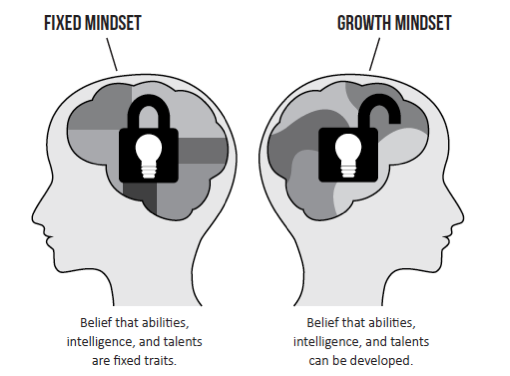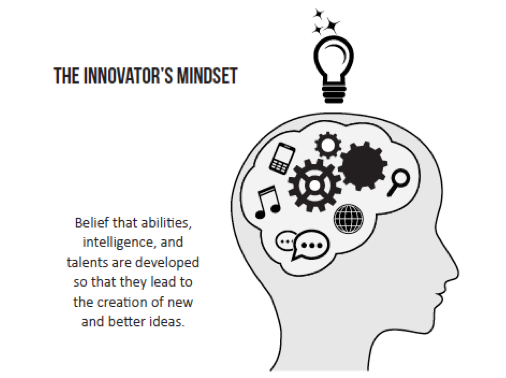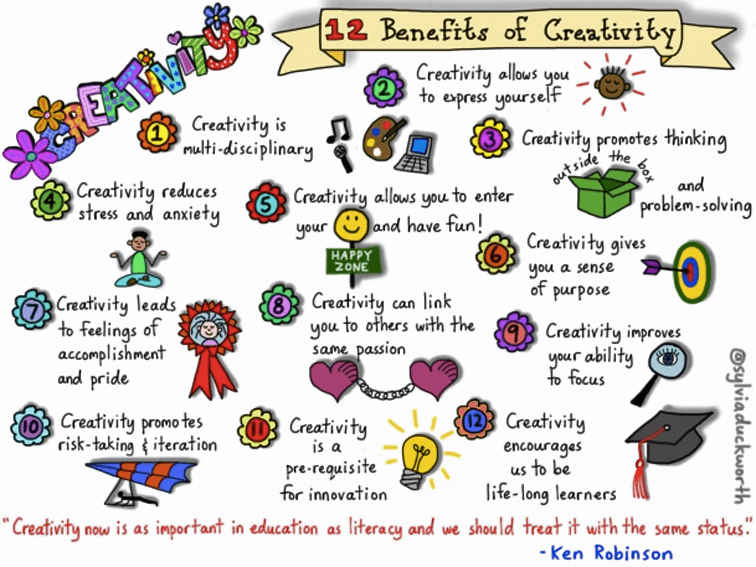Every Child Deserves Opportunities to Nurture Creativity & Their Big Ideas

For the past month or so, I’ve been working with fifth and sixth grade learners from a city school district on Design Thinking, growth mindset, and the concept that every single one of us has ‘big ideas’ within. One of our goals was to support communication and collaboration between peers, too. Being a new person to the students, some were a bit skeptical of me at first, because they weren’t sure what this was all about. Many lack trust already, so I had to ensure that during my time, I was also fostering relationships. However, within seconds of reading the book, What Do You Do With an Idea, by Kobi Yamada, they were hooked!
What Do You Do With an Idea, is about a boy who has an idea, but doesn’t feel confident in it. He tries to ignore it, but his idea seems to follow him. Before long, he decides to pay more attention to his idea because it demanded it. The boy began to care for it, but other people teased him and told him it was no good. Over the course of the story, the boy grows more fond of his idea and does all he can to grow it. It’s a story with a beautiful, inspirational message for all ages! I chose this book because its message encourages individuals to embrace their big, crazy, and wild ideas; nurture, and grow them.
As we read, we explored questions such as:
- Why do you think the colors changed from black and white in the beginning to vibrant colors at the end of the story?
- How did the boy feel initially about having a big idea?
- In what ways did the character’s feelings change toward his idea throughout the story?
- How did the idea change throughout the story?
- What does it mean when the author wrote that the boy fed his idea, built it a house without a roof so that it could dream, and gave it lots of attention to care for it?
Then, we made connections such as:
- Have you ever had a big idea? If so, how did you feel?
- How did people respond to you when you shared your idea?
- What are some of the big ideas that became a reality in our world?
- How have those ideas evolved over time?
Every Learner, Has Incredible Inner Potential
Many learners shared that they didn’t have ideas or that they never want to share the ideas that they have with others. Some confessed that they’ve shared their ideas and were teased by peers as a result. Very few were confident with having ideas. It’s typical to have a variety of responses, but one of my goals is to support learners to realize that they too, have amazing ideas within them. I want every child to believe that they have incredible inner potential, because they do. I’m deeply passionate about this work, so it’s exciting to see student growth even throughout our short time together.
After discussing, we explored Design Thinking as part of a collaborative challenge. Since we only had one class session together, I had to make modifications. To do Design Thinking well, it really requires longer chunks of time. But, exposing kids and helping them to think through the process can still be powerful even if modified. I’m a believer that it’s better to do a little of something, than nothing at all. During our time, we went through the stages of empathy, define, ideate and designed a mini prototype using only 15 LEGO bricks as a representation of their idea. I chose to stick with just 15 LEGO bricks to create a constraint. Limitations often inspire creative thinking and encourages the brain to think ‘differently,’ which was exactly what I was aiming for.
As part of the challenge, learners had to identify a problem within their community to create a solution for. This required them to empathize with the needs around them. As a side note, I chose not to share the needs that I know exist. I empowered students to identify the needs of their community during the empathy and define stages as they reflected on problems they could solve.
Initially, a few learners expressed that they couldn’t create their big idea with such few LEGO bricks. In fact, one student declared to the entire group in an exasperated tone, that the challenge was completely ‘impossible.’ However, after working through the struggle to embrace a growth mindset, that very same learner came up with a pretty magnificent idea! And, I wasn’t surprised. Every single individual has ideas within, but often, kids aren’t provided with opportunities to consider what their ideas may be or, they may have ideas, but lack the opportunity to share or develop them. Watching kids work through challenges and seeing their ideas develop is an incredible process to see unfold.
Although one of our goals was to foster a growth mindset, we actually took it much further to cultivate the innovator’s mindset. The two mindsets differ in such a way that a growth mindset is simply the belief or understanding that abilities, intelligence, and talents can be developed, whereas the innovator’s mindset takes the concept much deeper. With an innovator’s mindset, we are building onto a growth mindset by supporting learners to understand that abilities, intelligence, and talents are developed so that they lead to the creation of new and better ideas, as detailed in the graphics below. If interested, I’d highly recommend reading both The Innovator’s Mindset by George Couros and Innovate Inside the Box by George Couros with Katie Novak.


It’s critical that in education, we move beyond fostering a growth mindset and into cultivating an innovator’s mindset. Of course, we want learners to embrace belief in themselves that they can grow with time and effort, but ultimately, we want our youth to grasp that they’re developing their abilities to create new and better ideas; they have the ability to innovate.
At the conclusion of our time together, each team shared out their mini prototypes to their peers. Listed below are just a few of the ideas learners came up with over the past month based on the needs they empathized with in their community. I was really impressed with how genuine their thinking was in regard to the needs they identified.
Magnificent Ideas Shared by Fifth and Sixth Grade Learners
- A vehicle that would arrive anywhere you are in the city with just a push of a button on a utility pole. This vehicle would be self-driving and can read your location based on the button you pushed to call for it. Once inside, you can use voice command or push a labeled button for the vehicle to take you to the police or hospital, depending on your need. Essentially, it’s a vehicle to get you out of harms way and into safety.
- Mobile stations around the city that provide those who are homeless with basic necessities. These stations would just require a code provided by a service provider in the community so that individuals could receive small meals, a clean pair of socks, a toothbrush and toothpaste, etc. Once the code is input, you’d push the button for what you need and out it would come.
- A robot that would safely walk children to and from school, and provide them with snacks or appropriate outdoor gear when needed. For example, if it suddenly started to rain, no worries! A sensor would detect rain and the robot would pop open an umbrella!
There were so many other amazing ideas, but these three examples capture just how much learners can empathize with the needs within their very own community and develop creative solutions to some of the problems that exist. To note, some kids initially hesitated with their ideas and said, “I don’t know how I’d ever actually make this work.” It was important in those moments to remind them that the goal was to dream big and not worry about the logistics. If all we did was think about the logistics, we’d stop before ever starting. I wanted them to let their minds run wild to create big, crazy ideas so that they could see what they could come up with. Many were surprised by their own ideas, and it was a lot of fun to see the ideas evolve during our time.
Creativity Nurtures a Joy for Learning
Learners blossomed throughout the session! At the beginning, they seemed skeptical of me and a couple even bluntly expressed their dismay to be there to do an activity. However, before I knew it, they were glowing with excitement and asking when we could do this again. They wanted to share more ideas and create designs. Seeing their smiles and their demeanor shift, reminded me exactly why I do the work that I do.
At the conclusion of our time together, I asked students to share one thing that they learned during our time.
Responses included the importance of:
- Having a growth mindset.
- Being open to new ideas.
- Understanding that sometimes our ideas fail, but we can recreate, revise, or rebuild them.
- Remembering that we can be the change.
- Working collaboratively with others and respecting differing ideas.
- Understanding that it’s okay to share our ideas or have ideas.
- Embracing different ideas/thinking differently
- Encouraging others who have positive ideas.
- Gaining empathy for others.
- Anything is possible.
All of these learnings shared by students are fantastic. But then, at the conclusion of our time, a child that teachers didn’t expect to share much of anything due to their attitude toward school, shared something rather profound. With pride and a nod of his head, he looked around at all of us and said, “I learned that my idea, just may be the very thing that changes our world.” With that, he grinned at all of us. He exuded confidence in that moment, and my hope is that he maintains it.
Creativity is Not For Just a ‘Certain’ Kids or For When ‘Everything Else’ is Complete
Our kids need to not just know, but believe in themselves, that they have incredible ideas worth sharing. However, sometimes it’s about creating the space and opportunities to develop those ideas. If we are always rushing kids to the next assignment or assessment, they can’t very easily even consider ideas. In my role, I get the opportunity to travel and work with many schools. Through these experiences, I’ve also recognized that different schools promote idea sharing and exploration, along with creating and making very differently. That doesn’t necessarily surprise me, but I notice that in some cases, schools encourage this practice as an ‘extra,’ or allow it only if their learners are already proficient in the basics. However, engaging in Design Thinking or other forms of creative thinking and exploration are essential to all learners.
Every child benefits from feeling genuinely supported and encouraged to share their big ideas, because they certainly have them or have the potential to develop them. I can’t help but wonder how many great ideas have never been shared because either someone didn’t believe they were any good, or know what to do with them. Furthermore, how many great ideas never come about simply because in school, there was never time for it?
I appreciate this beautiful sketchnote by Sylvia Duckworth, sharing on the 12 Benefits of Creativity, according to Sir Ken Robinson. As an educator with over 15 years of classroom experience, I understand how busy our days can be. However, in any class or school, we can foster creativity in a variety of ways within any content area.

When we look at the world we are in, creativity and innovation is all around us. There are so many benefits from developing problem solving skills to developing a sense of purpose. Education is more than learning the basics. Yes, they’re absolutely essential, but in today’s world, we need to also ensure that we provide our learners with opportunities to explore their strengths, interests, and develop passions–– all which just may lead to the next, big idea.

